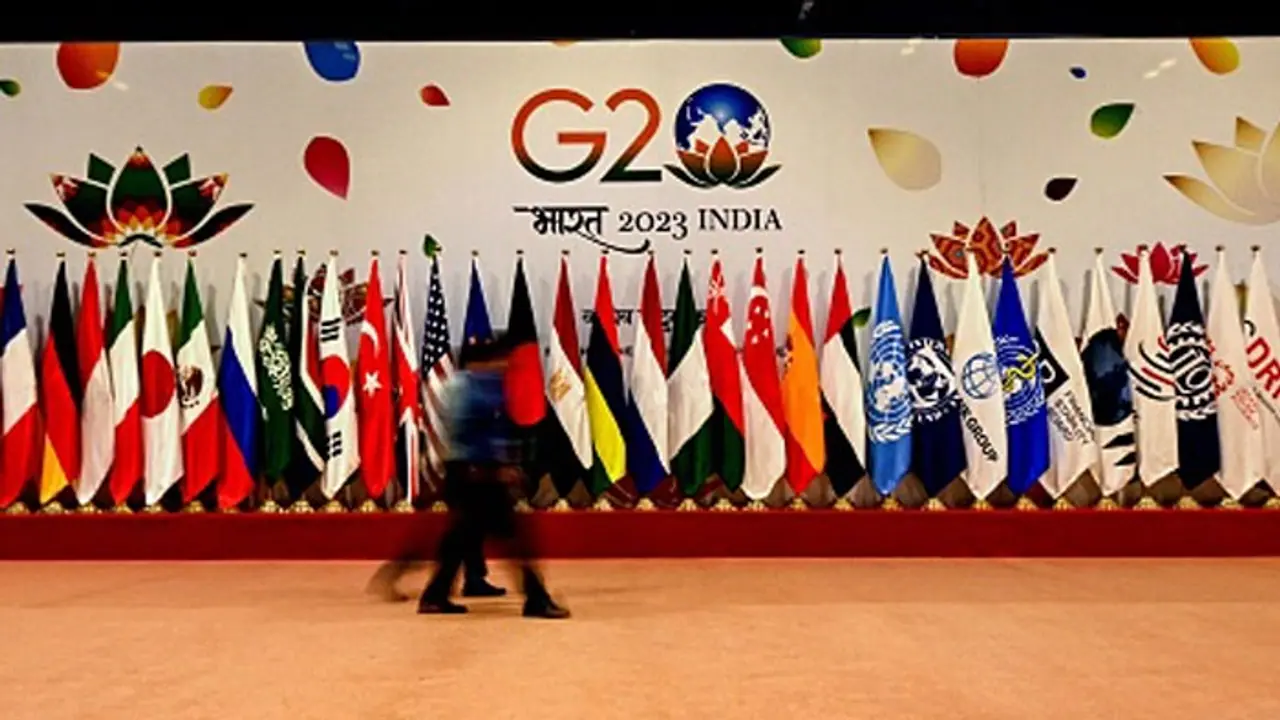Till now, any visit by foreign dignitaries to any plenary in India necessarily included a mandatory visit to the capital Delhi and a photo-op trip to the Taj Mahal in Agra. But never before has the larger India been represented in their itinerary, as it now is being done. Girish Linganna explores the collective thoughts, aspirations and efforts that helped frame India’s agenda.
The heart and soul of India lies not in its metropolises, but in its cities, small towns, villages -- a sagacious thinker had once said. India’s G20 Summit is out to prove the wise man’s words true. Last year, the first-ever Chess Olympiad Torch Relay, commemorating the occasion of Azadi ka Amrit Mahotsav -- 75 years of India’s Independence -- had covered a total of 75 cities.

This year, India’s move to hold all of the nearly 200 meetings of the G20 member-states, invitees and organisations in its 50 cities and 32 working streams instead of confining them to glittering conference rooms of the national capital and a few other important cities, has enabled India to bolster its image by holding up to the world its cultural diversity and different regions and branding it perfectly.
The G20 Summit, themed Vasudhaiva Kutumbakam (One Earth, One Family, One Future) under India’s presidency, aims at building unanimity in addressing global challenges collectively and effectively.
The Think20 Summit
On August 3, 2023, External Affairs Minister S Jaishankar virtually addressed delegates of the G20’s Think20 Summit in Mysuru, Karnataka. He said India had been able to capitalize on the G20 platform to display change in action and to 'make the world ready for India and India ready for the world'.
Jaishankar also spoke on global issues and how they affected the world at large. Jaishankar said the world did not have a single problem leading to a single consequence; it had multiple concerns. Taking these into account, the G20’s mandate -- while still exploring the realms of development, had broadened in recent years, with even developments in Europe affecting it.
Instead of being impervious to it, the impact of such developments must be adapted and adjusted to.
The Four-Point Agenda
Prime Minister Narendra Modi has gone on record, saying that India’s G20 agenda will be inclusive, ambitious, action-oriented and decisive. India assumed a year’s G20 presidency on December 1, 2022. While the baton was being handed over to him at Bali from the erstwhile president by Indonesian President Joko Widodo in Bali, PM Modi assured world leaders that India would work towards inclusive, decisive and action-oriented policies during its G20 presidency.
Aiming for this, it has fixed its focus on six priorities:
* Green Development, Climate Finance and LiFE (with this last aspect, a ‘behaviour-based movement that takes from the country’s rich, ancient sustainable traditions, India plans to ‘nudge consumers and, in turn, markets, to adopt environmentally conscious practices)
* Accelerated, Resilient and Inclusive Growth
* Accelerating Progress on Sustainable Development Goals
* Technological Transformation and Digital Public Infrastructure
* Multilateral Institutions for the 21st Century
* Women-led Development
Throughout the year, meetings were organized in out-of-the-way locations, from Kashmir to Kanya Kumari, to showcase India’s beauty and the richness of its cultural heritage. The delegates and guests will be briefly introduced to India’s rich traditions in diverse languages, cuisines and cultural legacy.
Nagaland’s Hornbill Festival was one such main cultural event that the government chose to highlight at the start of India’s new role in G20. While on a visit to Varanasi for the G20 Development Ministers’ Meeting in mid-June this year, European Union Commissioner Jutta Urpilainen had said that her stay in the city was 'an enthralling experience' and that she would have missed out had the G20 event not been there.
Dignitaries from member States have been hosted at meetings in heritage cities, with major events conducted in far-flung regions, defence expositions being organized in different towns to streamline the growth path for small industries, arranging military commanders’ conferences across states -- even shifting the 75th Army Day parade outside Delhi, in Bengaluru, ever since the celebrations started in 1949.
For once, the world gained an insight into the ‘real India’ from a different light and accepted the strength and glory of this emerging superpower.
The government also initiated a ‘selfie campaign’ where citizens are encouraged to take selfies with the backdrop of monuments illuminated with G20 themes and the list of 100 monuments that have been shortlisted for this campaign also contains UNESCO heritage sites. To some people, these initiatives may have appeared frivolous in the beginning, but they have gone a long way in bonding the masses with the government’s diplomatic vision.
The author of this article is a Defence, Aerospace and Political analyst based in Bengaluru
